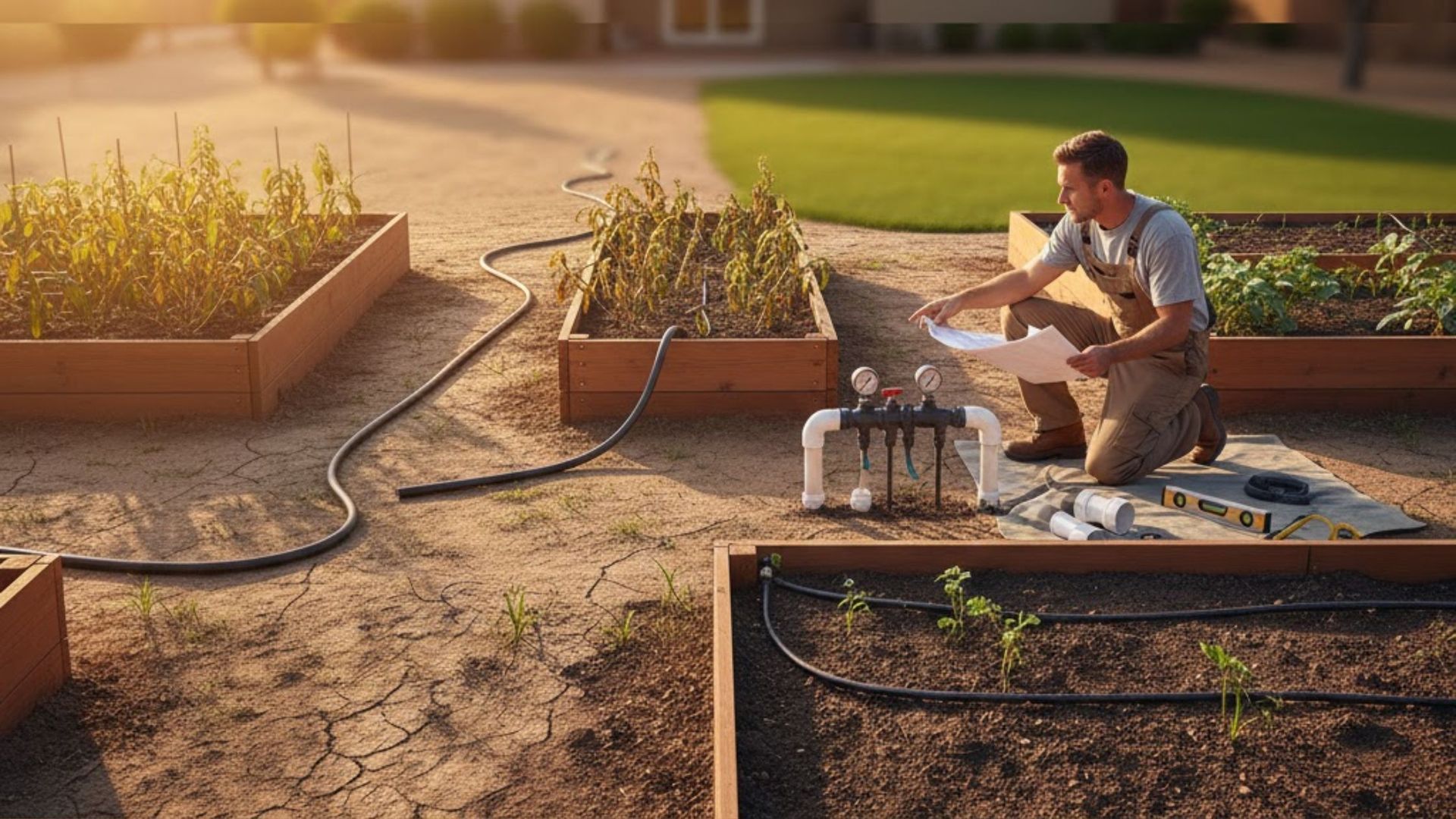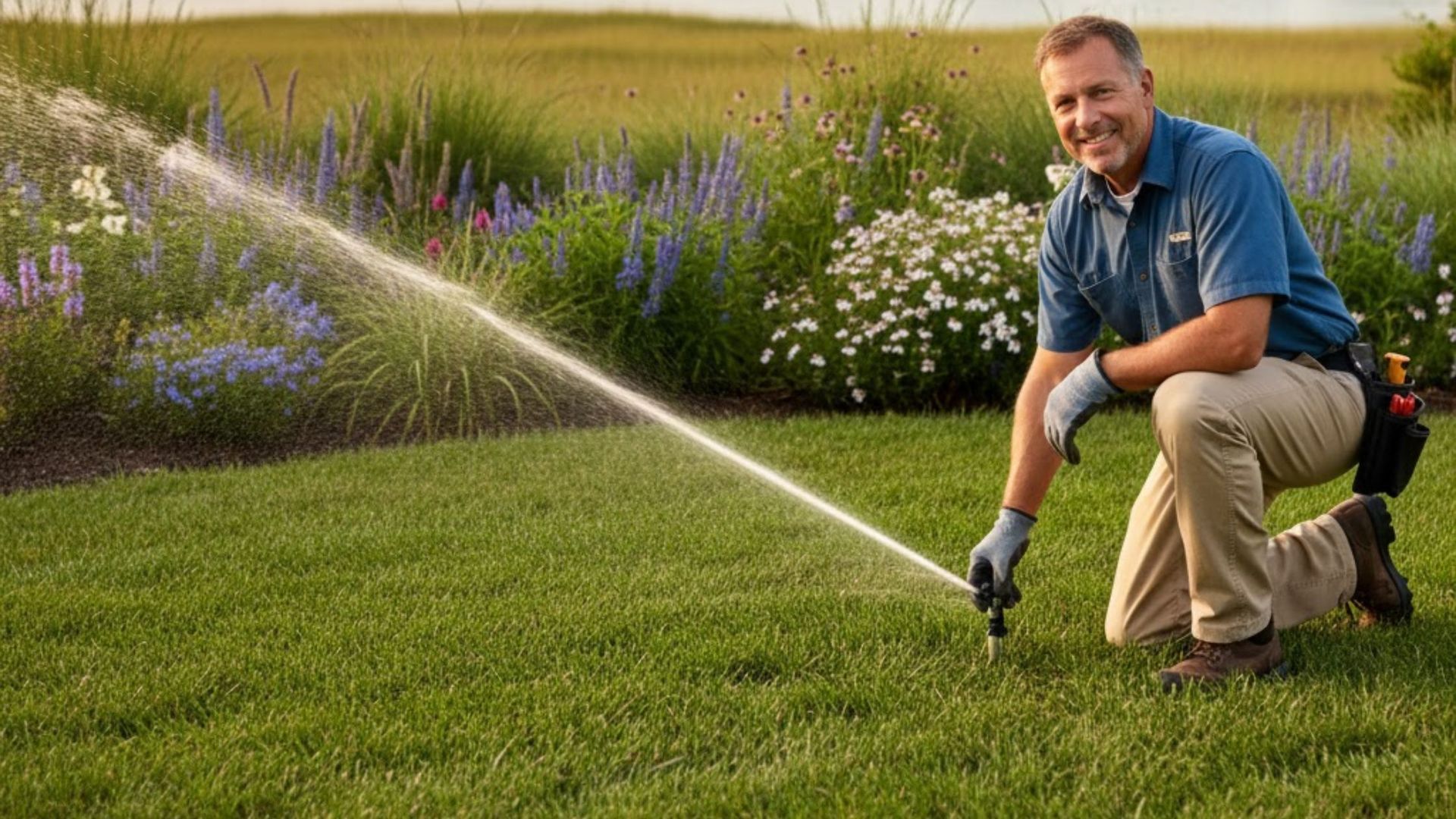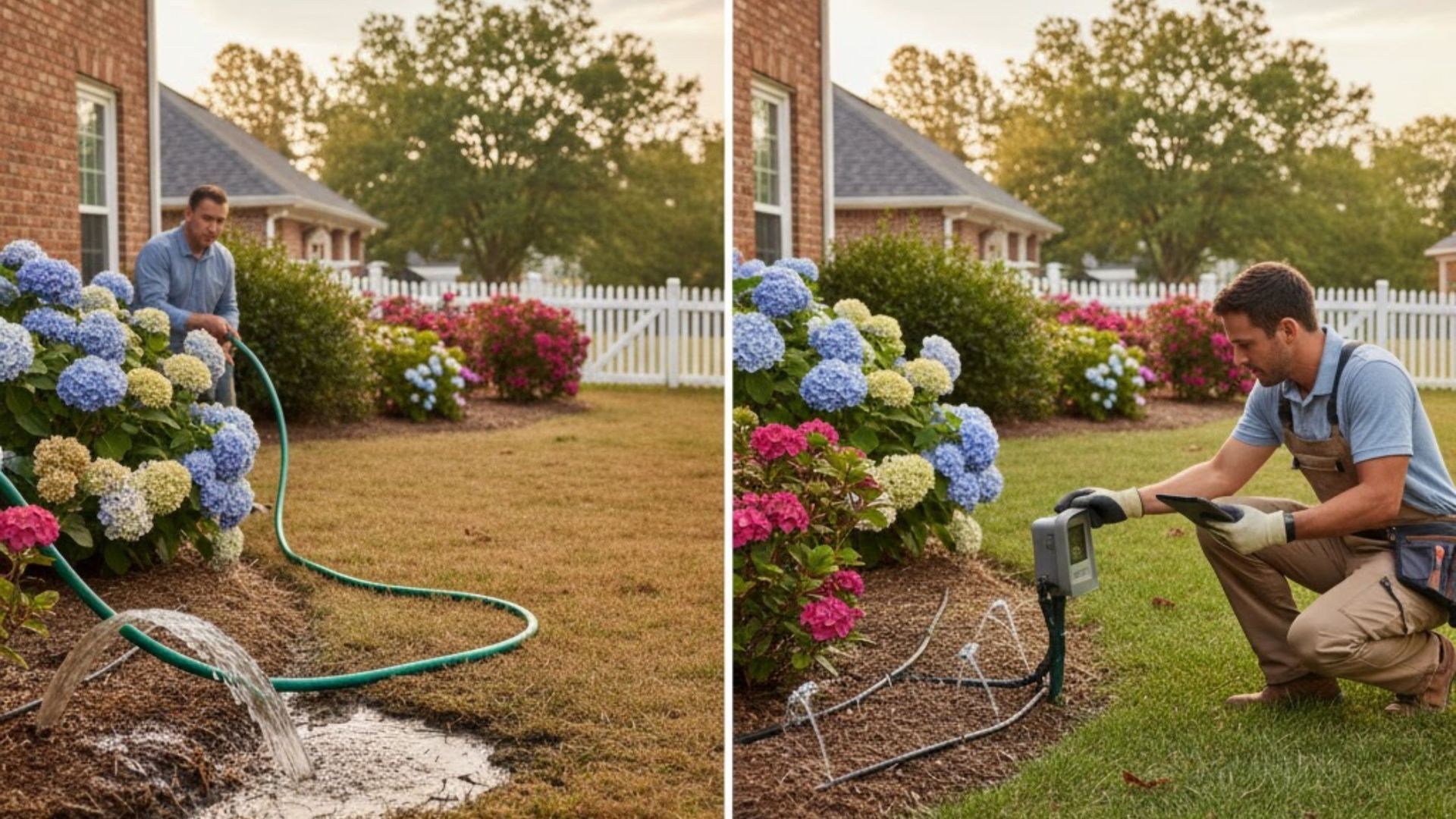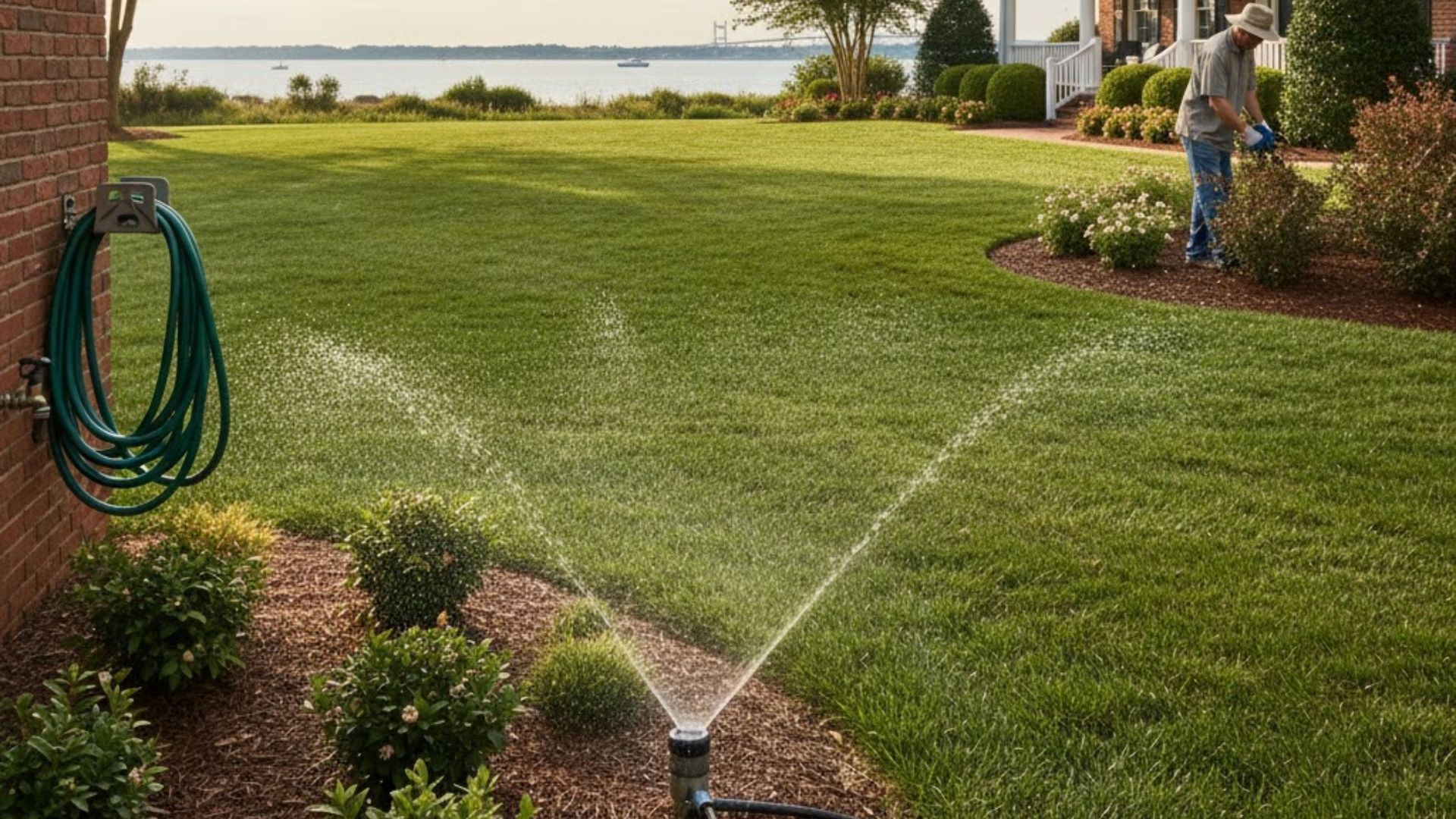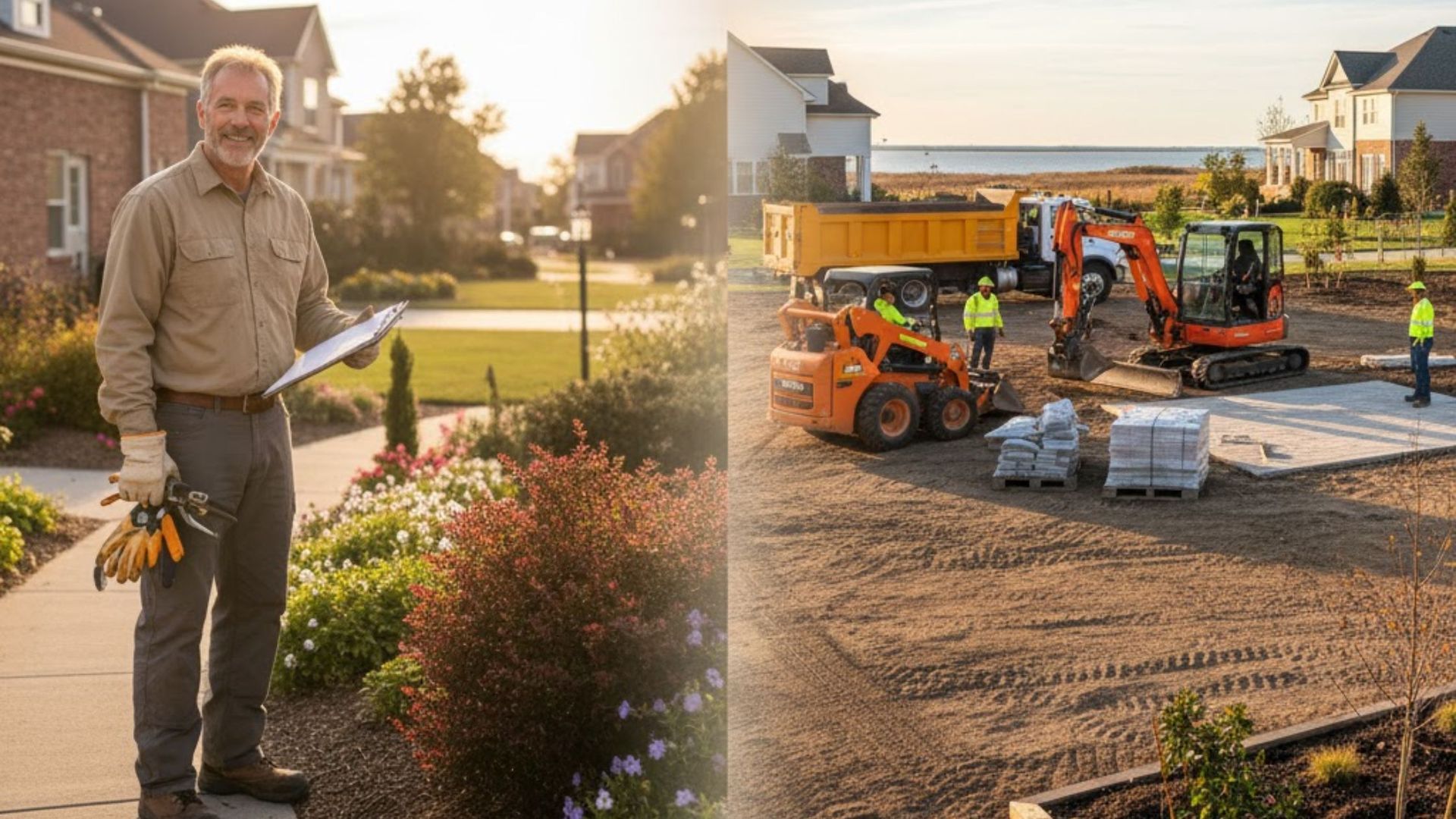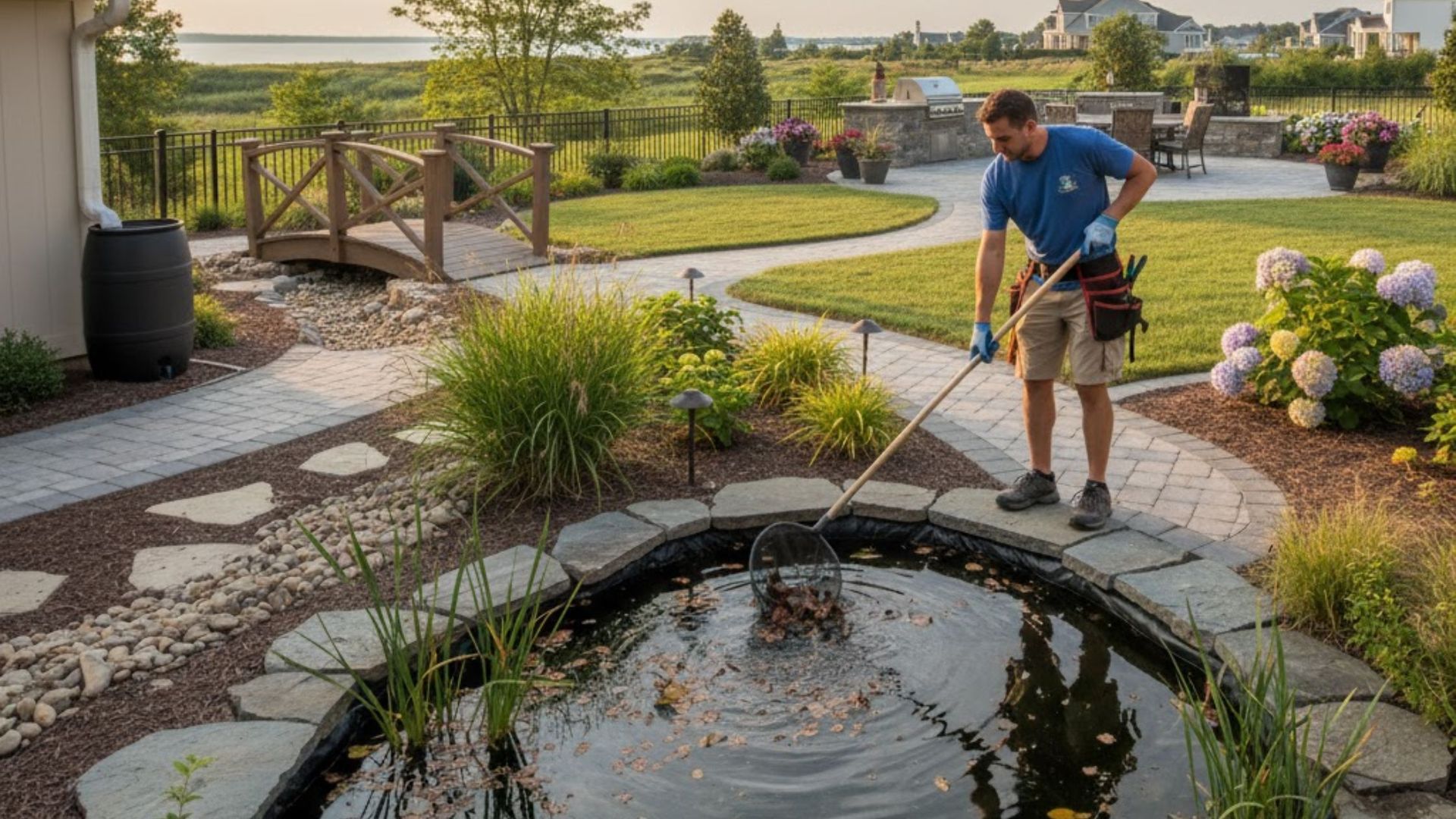What Type of Equipment Do Professionals Use for Yard Grading in Hampton Roads?

When dealing with uneven land, standing water, or improper slopes, securing a level and correctly pitched yard is crucial for property health and safety. The professionals tasked with achieving optimal results for Yard Grading Hampton Roads projects rely on an arsenal of heavy-duty machinery, not just basic shovels and rakes. The successful transformation of an outdoor space—whether for new construction, drainage correction, or landscape installation—demands a combination of raw power and pinpoint precision, supplied by equipment perfectly suited for the specific soil and climate of the Virginia coastal region. The most common and versatile piece of equipment professionals use for residential and light commercial land leveling is the compact track loader, often equipped with specialized attachments like laser-guided box blades or precision grading rakes.
This equipment allows experts to efficiently move massive amounts of earth, establish precise, consistent slopes, and prepare a flawless subgrade that guarantees excellent water management and a stable foundation for any future landscaping or construction. The choice of machine is always dictated by the project's scale, the soil type present, and the required degree of accuracy. Below, we detail the core machinery and specialized tools that professionals bring to every site to achieve reliable, long-lasting outcomes.
What is the most common heavy machinery used for residential land leveling?
For most residential and commercial projects that require Yard Grading Hampton Roads, professionals overwhelmingly favor compact machinery, primarily due to its versatility and ability to operate in tighter spaces without damaging surrounding areas. The combination of maneuverability and substantial hydraulic power makes these machines ideal for working around existing homes, utilities, and mature landscaping typical of the region. This is the bedrock of professional land equipment deployment, providing the necessary balance of force and finesse to handle the Tidewater area’s challenging soil composition.
Compact Versatility: Why the Skid Steer and CTL Reign Supreme
The skid steer loader and its cousin, the compact track loader (CTL), are the undisputed kings of residential grading sites. These machines are essential because they offer a grading machinery VA solution that is simultaneously powerful and compact. A standard skid steer is highly maneuverable on wheels, but for the specific conditions found in the lower Virginia region, the CTL, which uses rubber tracks, often proves superior.
CTLs distribute their weight over a larger surface area, dramatically reducing ground pressure. This characteristic is vital when working on the often-saturated, soft, or clay-heavy soils common to the coastal plain. Reduced ground pressure minimizes turf damage and prevents the machine from becoming bogged down in wet conditions, keeping the project on schedule and preserving the integrity of the work area. Their power-to-weight ratio allows them to operate heavy, demanding attachments with ease, performing tasks that larger, less agile machines could not handle efficiently.
The Advantage of Tracked Systems in Tidewater Soil
The soil profile across the Hampton Roads area is famously varied, consisting of heavy, dense clay in some inland areas and looser, sandier materials closer to the coast and marshlands. Tracked machines, especially CTLs, provide superior traction and stability across this inconsistent and sometimes waterlogged terrain. They prevent the excessive rutting and compaction that wheeled machines can cause, which is a major concern when establishing a healthy grade for future planting or turf growth.
The ability to operate reliably in damp, challenging environments ensures that the grading can proceed even if the weather has been less than cooperative. Furthermore, the track system maintains a level platform, which is important for the operator to achieve consistent results, especially when making long passes with a grading attachment. This stability is critical for the final outcome of any project focused on effective water runoff and site preparation.
Specialized Attachments for Precision Earthmoving
The true genius of the modern compact loader lies not in the machine itself but in the array of specialized attachments it can utilize. These tools are the reason professionals can move beyond rough dirt work to achieve the millimetric accuracy required for perfect drainage and level pads. Without these specialized implements, the machine is just a powerful mover of dirt; with them, it becomes a surgical instrument for land modification.
The Indispensable Box Blade
The box blade is arguably the most essential attachment for achieving accurate and consistent finished grades. This heavy steel attachment is shaped like a three-sided box and is designed to scrape, carry, and distribute material smoothly across a wide area. It functions by allowing the professional to cut high spots and simultaneously fill low spots in a single pass, moving material within the box to achieve a uniform finish.
Advanced box blades are often equipped with laser or GPS receivers, transforming them into precision grading tools. These systems use a fixed laser reference on the site to guide the blade's height automatically, allowing the machine to maintain a perfect, predetermined slope or elevation. This technology significantly reduces the time required for staking and manual checks, ensuring an extremely high degree of accuracy for tasks like establishing driveway bases or leveling a pad for an outbuilding. For a comprehensive overview of how these tools address specific local terrain issues, you can review our dedicated section on Yard Grading Hampton Roads.
Utilizing Power Rakes for Final Soil Preparation
Once the bulk of the earthmoving is complete and the approximate grade is established with the box blade, the landscape or power rake attachment comes into play. This tool features rotating teeth that are designed for several crucial final-stage tasks. It is highly effective at removing small rocks, roots, and debris that remain after rough grading, leaving a clean, clear work area.
More importantly, the power rake can be angled to windrow (create small piles of) material, making cleanup easy, and it also functions as a light tiller. It works the surface soil to break up clods and slightly loosen the top layer, creating a uniform, conditioned seedbed that is ready for sod or grass seeding. Hampton Roads Irrigation & Landscape relies on these sophisticated tools to ensure that every job site transitions smoothly from a construction zone to a beautifully prepared landscape ready for the next phase of work.
Beyond the Basics: Supporting Equipment for Complex Grading Projects
While compact loaders handle the majority of the grading work, larger, more complex projects—especially those involving significant changes in elevation, deep drainage installations, or large-scale site preparation—require additional specialized grading machinery VA tools. These machines address the need for material handling, heavy lifting, and subsurface work that is beyond the scope of a standard skid steer or CTL.
Mini Excavators: Digging for Drainage Solutions
Mini excavators, ranging from micro to mid-sized units, are crucial when grading involves extensive drainage work. Grading is fundamentally about controlling water, and sometimes this requires the installation of French drains, catch basins, or significant trenching for utility lines. The excavator’s arm and bucket allow for precise digging of trenches at specific depths and slopes, which is essential for ensuring gravity-fed drainage systems work correctly.
Their ability to rotate 360 degrees allows them to dig and dump material efficiently without having to maneuver the entire machine, making them excellent for use in confined spaces. For sites with a high water table, which are common in the coastal areas of the Tidewater region, the excavator is also used for shaping retention or detention ponds and swales designed to manage stormwater runoff effectively.
The Science of Slopes: Laser and GPS Guidance Systems
A skilled operator’s eye is invaluable, but the consistency of a perfect slope over a long distance is best achieved with advanced positioning technology. Laser-guided systems use a rotary laser level that projects a continuous 360-degree beam across the entire site. A receiver mounted on the grading attachment constantly reads this beam, informing the operator—or automatically controlling the hydraulic height of the blade—to maintain the precise grade plane.
For very large or complex sites, some professional land equipment includes GPS or total station technology. These systems allow for three-dimensional modeling of the land, providing centimeter-level accuracy even on irregularly shaped plots with multiple complex slopes. This investment in technology guarantees that the final grade is not only aesthetically pleasing but also perfectly engineered to prevent future foundation or water intrusion issues, a commitment to quality we proudly reflect in the testimonials found on our review page.
Understanding Local Challenges and Soil Composition in Virginia
A true professional understands that the equipment is only as good as the operator's knowledge of the local environment. The unique challenges of the Hampton Roads area—its proximity to the Atlantic Ocean and the various rivers, coupled with its distinct geological history—greatly influence equipment selection and grading techniques.
The Coastal Plain, which encompasses the entire Tidewater region, features soils that are highly prone to compaction and saturation. A typical sample might show a mixture of loamy topsoil, heavy silty clay subsoils, and layers of marine sand. This variability requires Hampton Roads Irrigation & Landscape to select machines and attachments that can handle both the stickiness of clay when wet and the tendency of sand to shift and settle when graded.
The Impact of Tidal Changes on Grading Requirements
In areas close to the Chesapeake Bay and its tributaries, the water table can be surprisingly high and fluctuate with tidal cycles and heavy rain events. This often dictates the need for deeper cuts and more robust subsurface drainage installations than might be necessary in an inland, higher-elevation area. Therefore, professional land equipment must be durable and resistant to corrosion, and the techniques used must account for the likelihood of encountering saturated soil shortly after excavation. Professionals often use large-diameter corrugated drainage pipe and generous layers of permeable aggregate to ensure water moves away quickly and effectively, even during peak saturation periods.
Equipment Selection for High Water Table Areas
When working with elevated water tables, lightweight, high-flotation machinery is often prioritized. Compact track loaders are chosen because their wide track base minimizes sinking and ground disturbance. In addition, the use of tilt-rotator attachments on mini-excavators allows the operator to perform complex trenching and material placement without having to constantly reposition the machine, which is crucial for maintaining the stability of the surrounding wet soil. Choosing the correct equipment for the specific terrain is a cornerstone of successful project execution in this region.
The Professional Grading Process: From Start to Finish
A professional grading project is a multi-stage process that leverages specific types of machinery at distinct points to achieve the final, perfect result. It moves logically from initial assessment and heavy earth movement to fine-tuning and final soil preparation.
Initial Assessment and Planning
Before the first piece of grading machinery VA even moves, the planning phase is crucial. This involves a thorough topographic survey of the existing land, locating all buried utilities using service like Miss Utility, and setting initial grade stakes. This planning dictates the choice of equipment—whether a full-sized bulldozer is needed for massive cuts and fills or if a CTL with laser guidance will suffice. This also determines the required import or export of soil, influencing the need for dump trailers and specialized loading equipment.
If you have questions about which phase your property falls into, or to schedule an on-site consultation, please contact us directly. Our team provides detailed, transparent plans outlining the equipment and techniques we propose for your unique terrain challenges.
Rough Grading vs. Fine Grading: Different Tools for Different Jobs
Rough Grading is the initial, large-scale movement of earth designed to establish the major contours of the land, such as the overall slope away from a structure or the creation of a drainage swale. For this phase, large skid steer buckets, basic grader blades, or even small dozers are used to move the bulk of the material quickly. Accuracy is measured in inches.
Fine Grading, in contrast, is the final phase where the surface is prepared for planting or pavement. Accuracy is measured in fractions of an inch. This is where laser-guided box blades, power rakes, and landscape levelers are absolutely critical. They ensure the ground is perfectly smooth and pitched to the necessary specifications, which is vital for preventing pooling water and providing a firm, flat base for patios, walkways, or foundations.
Post-Grading: Soil Conditioning and Seedbed Preparation
Once the proper grade is established, the work is not over. The soil’s condition must be optimized for whatever is installed next. Heavy machinery can often compact the soil, which hinders root growth and water infiltration. This is where rotary tillers and specialized cultivators, attached to the same compact loaders, are used to lightly break up the upper layer of the soil. This conditioning creates an ideal seedbed, ensuring that any grass seed or sod laid down has the best chance for successful establishment and long-term health. The goal is to leave a surface that is structurally perfect and agriculturally ready.
Why Expertise Matters as Much as the Machinery
It is a common misconception that simply owning the right professional land equipment guarantees a quality outcome. The truth is that the skill and experience of the operator are just as important—if not more so—than the machine itself. A sophisticated laser-guided box blade can only perform to its potential in the hands of an expert who understands soil dynamics, hydraulics, and local building codes. Hampton Roads Irrigation & Landscape operators possess extensive knowledge of the Tidewater region's unique geographical and environmental characteristics.
Operating heavy machinery requires an intuitive understanding of how different soil types respond to pressure, how material compacts and shifts, and how to read the subtle movements of the machine to make precise adjustments. A highly skilled operator can often achieve a better result with a simpler machine than an inexperienced operator can with the most advanced technology. They are not just moving dirt; they are engineering the foundation of your property. For the highest level of craftsmanship and reliable results, partnering with a trusted local provider is paramount. You can learn more about our commitment to excellence by visiting our profile for Hampton Roads Irrigation & Landscape.
Frequently Asked Questions About Yard Grading
Here are answers to common questions homeowners in the area ask about grading their properties:
1. How deep do you grade a yard?
The depth of grading varies significantly depending on the project's goal. For simple surface drainage correction and fine grading to establish a lawn, typically only the top 4 to 6 inches of soil are manipulated. However, if the project involves deep swales, foundation work, or the installation of subsurface French drains and utility lines, professional excavators may dig trenches or make cuts that are several feet deep to ensure proper installation and frost protection.
2. Can I grade my yard with a regular tractor?
While a standard agricultural tractor with a rear blade can perform simple smoothing tasks, it is generally not sufficient for professional-grade yard grading, especially in Hampton Roads. Tractors often lack the fine hydraulic control and the precision attachments (like laser-guided box blades) necessary to achieve the exact slopes and pitch required for certified construction pads or comprehensive drainage control. Their heavier weight can also lead to excessive soil compaction, which is detrimental to healthy lawn growth.
3. What is the primary purpose of yard grading?
The primary purpose of yard grading is to control the flow and pooling of water around structures and across the landscape. By establishing specific, gentle slopes (typically a minimum 2% grade away from the foundation), grading prevents water from collecting near a home’s foundation, basement, or crawlspace, mitigating the risk of structural damage, mold, and costly water intrusion issues. A secondary purpose is to create a level, stable surface for new construction like patios, sheds, or driveways.
4. How long does professional yard grading take?
The duration of a professional yard grading project can range from one day to over a week, depending on several key factors. A small, straightforward drainage correction using a skid steer might be completed in eight to twelve hours. However, a full-scale project involving significant earth moving, large tree removal, the import/export of hundreds of cubic yards of soil, and complex drainage systems could easily require five to ten working days to complete with precision.
5. Is a box blade or a landscape rake better for grading?
Neither tool is universally "better," as they serve distinctly different functions in the grading process. The box blade is superior for rough and fine grading, as its design allows it to cut, carry, and evenly distribute large volumes of material, making it ideal for establishing the initial pitch and final smooth base. The landscape rake (or power rake) is better for finish work and preparation, as it excels at removing debris (rocks, roots) and breaking up the soil surface to create a loose, prepared seedbed suitable for planting. Both are essential components of a complete professional job.
Final Words
In summary, achieving a durable and structurally sound landscape in the complex terrain of the Virginia coast requires much more than moving dirt; it requires the correct professional land equipment operated by seasoned experts. From the robust, tracked Compact Track Loaders essential for handling the Tidewater region’s inconsistent clay and sand, to the laser-guided box blades that ensure every slope is mathematically perfect, every piece of machinery plays a vital role. This strategic deployment of grading machinery VA ensures that your property is protected from water damage and prepared for any future landscaping endeavors. If you’re looking to resolve drainage problems or establish a perfect foundation, choosing a specialist is the most important step. We are ready to bring the right machinery and expertise to your site for your next Yard Grading Hampton Roads project.
